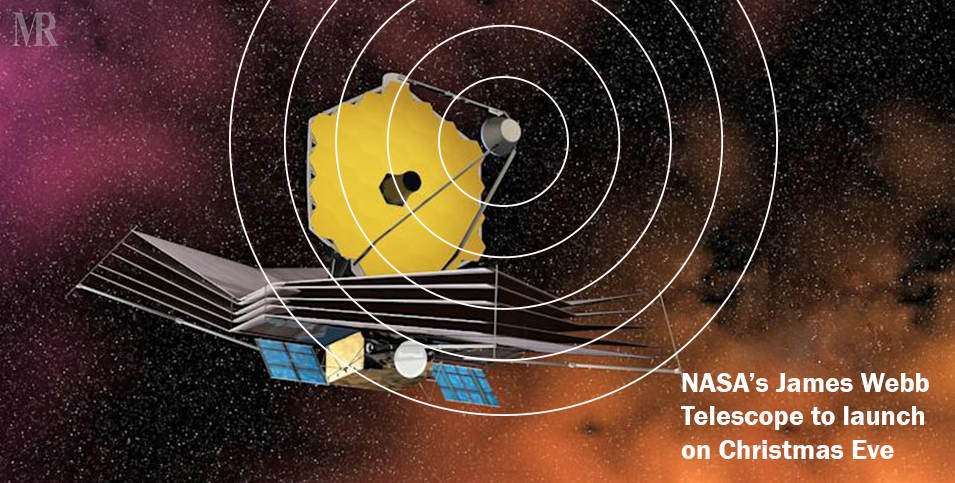Key Highlights:
- NASA’s James Webb Space Telescope will launch on an Ariane 5 rocket from the Guiana Space Center in Kourou, French Guiana on December 24.
- The Webb telescope will cost around $10 billion (€9 billion) to develop, deploy, and operate in space for five years.
- One of Webb’s objectives will be to investigate the attributes of the universe’s initial generation of stars.
James Webb Space Telescope finally gets a launch date
After 14 years of delays, NASA’s James Webb Space Telescope, the biggest space observatory in history, will launch on an Ariane 5 rocket from the Guiana Space Center in Kourou, French Guiana on December 24.
The principal missions of the telescope are as follows. Its primary aim is to investigate the early stages of the universe by collecting infrared light from the cosmos in order to shed insight into the universe’s origins. Its second aim is to find planets outside our solar system and study their atmospheres for evidence of life.
The Webb telescope will cost around $10 billion (€9 billion) to develop, deploy, and operate in space for five years.
To detect light, the telescope, which has a 21-foot-wide (6.5-meter) mirror and four super-sensitive detectors, will look at a very tiny region in the sky for days.
“They’ll be simply small red dots,” says Nobel prize winner and JWST senior project scientist John Mather. “We believe that stars, galaxies, and black holes may have formed 100 million years after the Big Bang. There won’t be many to find at that time, but the Webb telescope can see them if they’re there, and if we’re lucky, we’ll discover them,” he told.
However, because the telescope’s electronic devices will emit infrared light, its instruments must be extremely cold, around 40 kelvins (388° Fahrenheit below zero or 233° Celsius below zero), while the detectors inside the mid-infrared instrument (MIRI) must be even colder, less than 7 kelvins (448° Fahrenheit below zero or 266° Celsius below zero).
Webb Objectives
Webb will unfurl a sun cover the size of a tennis court after launch to protect the MIRI and other equipment from the Sun’s heat. After about 77 days, MIRI’s cryocooler will spend 19 days decreasing the temperature of the instrument’s detectors to less than 7 kelvins.
One of Webb’s objectives will be to investigate the attributes of the universe’s initial generation of stars. Webb’s Near-Infrared Camera, or NIRCam, will be able to identify these extremely distant objects, while MIRI will assist in confirming that these dim sources of light are clusters of first-generation stars. It will also identify chemicals found on Earth, such as water, carbon dioxide, and methane, as well as those found in stony minerals, such as silicates, inappropriate conditions surrounding neighboring stars, where planets may form. “By combining expertise from both the US and Europe, we have developed MIRI as a powerful capability for Webb that will enable astronomers from all over the world to answer big questions about how stars, planets, and galaxies form and evolve,” said Gillian Wright, co-lead of the MIRI science team and the instrument’s European principal investigator at the UK Astronomy Technology Centre (UK ATC).
Also Read: Take a Closer Look At The First Ever Picture Of A Black Hole














